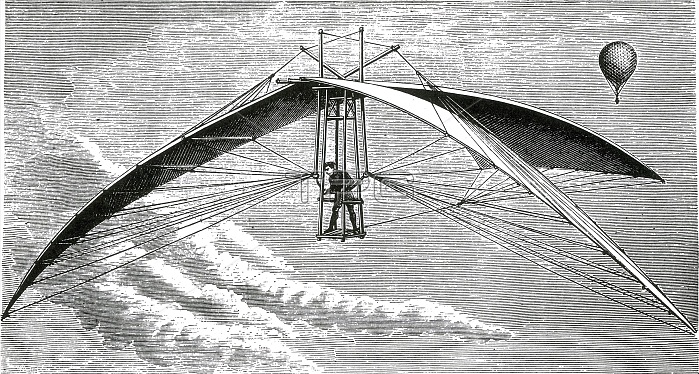
"On June 29, 1784, Vincent De Groof, the flying man, lost his life recently at London, England. He had ascended in a balloon, and his part of the performance was to fly down to the earth after the balloon attained a great altitude. The unfortunate inventor had constructed a pair of wings made of cane and silk, each 37 feet long by 4 feet wide, and also a tail 18 by 8 feet in dimensions. The wings were inserted into two hinged frames, which were attached to a wooden stand, upon which the aeronaut stood and manipulated them by means of levers. The theory was that, when started from any high altitude, the machine would reach the earth by a very gentle incline, passing over a great distance and eventually landing without concussion. At a first trial of the device, on being dropped from a balloon, the earth was reached in safety, but on the present repetition of the experiment, De Groof seemed to lose control of his wings, and the apparatus collapsed and fell, dashing the man to pieces on the street pavement below." (Scientific American, 1890).
| px | px | dpi | = | cm | x | cm | = | MB |
Details
Creative#:
TOP22284007
Source:
達志影像
Authorization Type:
RM
Release Information:
須由TPG 完整授權
Model Release:
N/A
Property Release:
No
Right to Privacy:
No
Same folder images:

 Loading
Loading